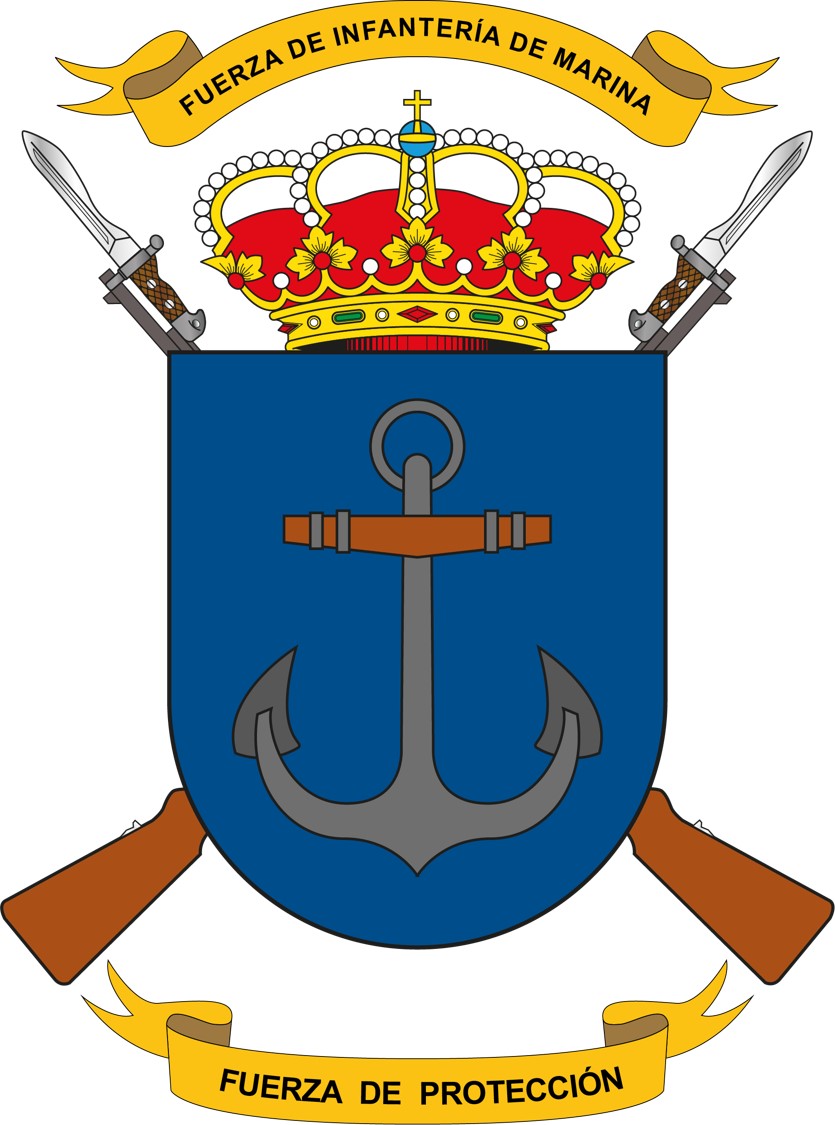Protection Force (FUPRO)
Marine Corps (FUPRO)
Welcome to the website of the Spanish Navy Protection Force (FUPRO).
The Protection Force is one of the three elements of the Marine Corps in charge of the protection and security of naval bases, facilities, centres, departments and Spanish Navy personnel.
It is made up of three "Tercios" (Regiments), a Group and a Security Unit.
This long-standing Force has comfortably adapted to the needs and requirements of the 21st Century. Emerging technologies and new equipment in the field of security have been incorporated, while maintaining the specific tasks of the Marines in the amphibious domain.
First and foremost, we are sea soldiers.
The FUPRO Command Post is in Madrid but we are currently in the process of moving to the Algameca Naval Station in Cartagena.
The Command is exercised by a Marine Corps Brigadier General assisted by an Auxiliary Command structure under the command of a MC Lieutenant Colonel.
The following are the Protection Force Units:
- Northern Tercio (TERNOR) with base in Ferrol (Corunna)
- Southern Tercio (TERSUR) with base in San Fernando (Cádiz)
- Eastern Tercio (TERLEV) with base in Cartagena (Murcia)
- Madrid Security Group (AGRUMAD).
- Canary Islands Security Unit (USCAN) with base in Las Palmas
Protection Force Units provide security to people, bases, facilities, centres and other Navy departments. They also take part in maritime interdiction (MIO) and protection operations (MFP).
The Protection Force is the surviving vestige of former 16th Century "Tercios" (Regiments).
The word Tercio comes from the age of the Catholic Sovereigns (Isabella and Ferdinand). Originally there were three tercios (Naples, Sicily and Lombardy) and a fourth one, Milan, was set up a bit later. They were known as Old Tercios, and in 1565 the New Tercios were created. By 1807 there were three Tercios: Northern (Ferrol), Western (San Fernando) and Eastern (Cartagena).
The Marine Corps was established to serve as combat units on board Navy vessels and also as defense detachments in shore facilities. The 1748 Royal Ordinances state that: "Marine Battalions operate under the command of the Spanish Navy Director General". As time went by, the Marine Corps evolved towards a modern structure with specific tasks more in line with current requirements, but without renouncing its glorious past.
After the Spanish Civil War the new Navy Minister, Admiral Salvador Moreno, re-structured the Marine Corps and set up five Tercios under the command of the respective Naval Base Commanders. Each Tercio was made up of a light Infantry Battalion, several Companies, an anti-air defense Battalion and an Instruction Battalion.
In January 1970 the Defense and Security Forces were reorganized once again and the Marine Corps suffered minor changes in its structure. Some Tercios were restructured and some others disappeared, like the Balearic Tercio.
The last reform took place in December 2010 when the basic structure of the three Services was yet again redefined. The Marine Corps was tasked with the protection and security of Spanish Navy facilities and bases. The novelty of this last reform lies in the change from a regional organization to a functional one, thus establishing a single Authority under the command of a MC Brigadier General.





